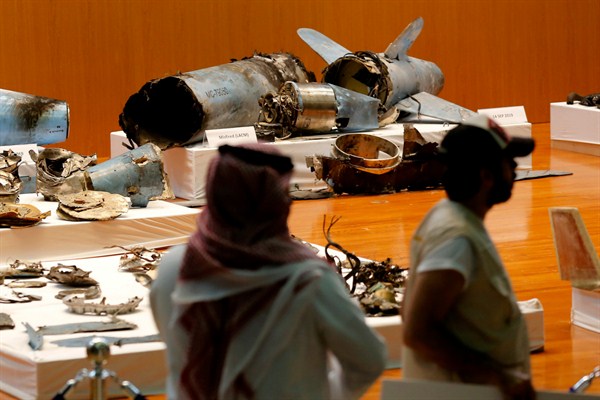If Iran is in fact responsible for the recent attack on Saudi oil facilities, whether directly or through its proxies in Yemen, it suggests that Iranian cruise missiles and drones are getting more sophisticated. Unlike its ballistic missile program, which receives considerable international attention, Iran’s cruise missile capabilities have long stayed under the radar. That may change following the damage done to oil infrastructure in eastern Saudi Arabia. With more accurate strike capabilities, Iran’s cruise missiles have major implications for the military balance of power in the Persian Gulf.
Although Iran has one of the largest arsenals of ballistic missiles in the world, it is limited in how it can use them. While it has missiles that can strike targets up to 2,000 kilometers away, most have limited accuracy. Iran’s adversaries across the Gulf—including forward-deployed U.S. forces in countries like Bahrain, Qatar and the United Arab Emirates—also have extensive ballistic missile defense systems.
Over the past decade or so, Iran has made a concerted effort to improve the accuracy of its shorter-range ballistic missiles. But even after some advancements, the strike capabilities offered by these ballistic missiles remain limited. Meanwhile, enduring fiscal constraints and the many effects of international sanctions continue to hamper Iranian efforts to upgrade its decrepit air force.

